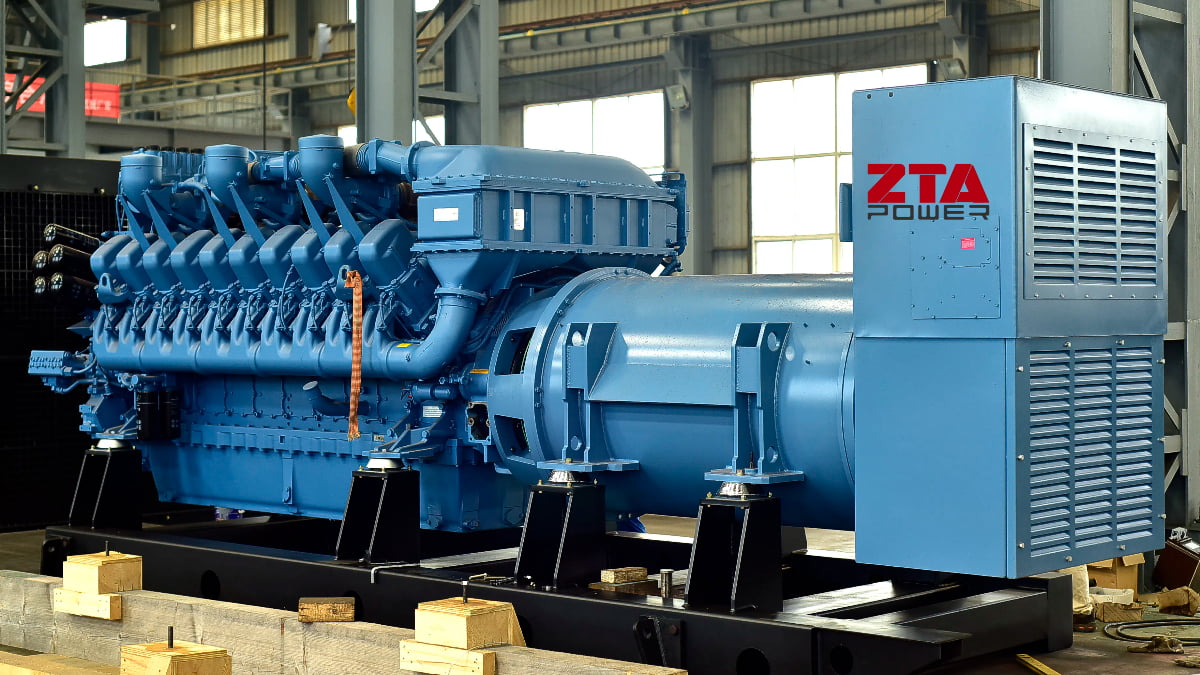The Relationship Between Horsepower and Displacement in Diesel Generators
Since their inception, diesel generators have been renowned for their high torque and thermal efficiency. With technological advancements—from traditional compression-ignition engines to turbocharged direct-injection and electronically controlled common-rail systems—diesel generators have achieved remarkable improvements in performance and power output, driving progress across industries.
To optimize diesel generator operation, ensuring complete fuel combustion, normal exhaust emissions, and rated power output is critical. Inefficient combustion not only reduces efficiency and increases fuel consumption but also contributes to pollution and operational hazards. Enhancing combustion chamber design can significantly improve environmental performance and operational efficacy.
How Diesel Generators Convert Energy
Diesel generators transform the chemical energy of diesel fuel into mechanical energy through internal combustion. However, combustion efficiency depends on three key factors:
Combustible material (diesel)
Oxidizer (oxygen)
Ignition source (compression heat)
Challenges in Combustion:
Insufficient oxygen leads to incomplete combustion, producing carbon residues and harmful emissions.
Sudden cooling (e.g., cylinder wall contact) halts combustion prematurely.
Solutions:
Advanced exhaust aftertreatment (SCR, DPF) minimizes emissions.
High-pressure common-rail injection improves fuel atomization and combustion efficiency
Horsepower vs. Displacement: The Technical Connection
Displacement (engine size) directly influences horsepower (power output):
Higher displacement = Greater air intake capacity = More fuel burned per cycle = Increased power output
Key Factors:
Air-Fuel Ratio:
Diesel engines require 14.7:1 stoichiometric ratio for optimal combustion.
Turbocharging increases air density, allowing more fuel injection.
Combustion Efficiency:
Modern engines (e.g., Cummins QSK95) achieve >45% thermal efficiency via:
High compression ratios (16:1 to 22:1)
Precision fuel injection (30,000 psi in common-rail systems)
Power-to-Displacement Ratio:
Example:
4B3.9 (3.9L): ~75 HP/L
6CTA8.3 (8.3L): ~85 HP/L
Trade-offs:
Larger displacement improves torque but increases weight/fuel consumption.
Smaller, turbocharged engines (e.g., 6B5.9) deliver comparable power with better fuel economy
Practical Implications
Standby Generators: Higher displacement (e.g., 6C8.3) ensures stable load handling.
Portable Units: Compact engines (e.g., 4B3.9) prioritize fuel efficiency.
Pro Tip: For peak performance, match displacement to load requirements:
<100 kW: 3.9–5.9L engines
>500 kW: 8.3L+ engines with turbocharging
